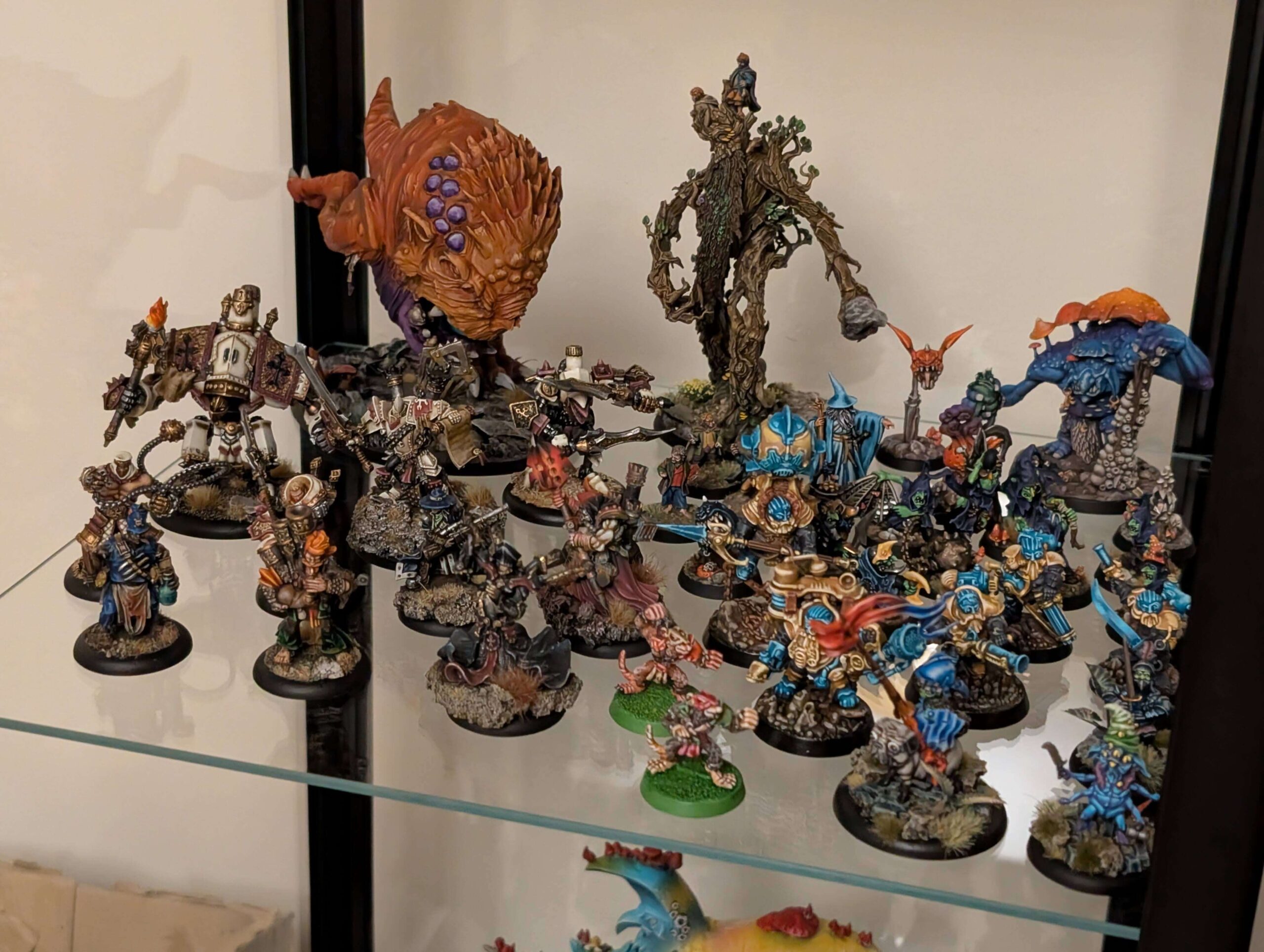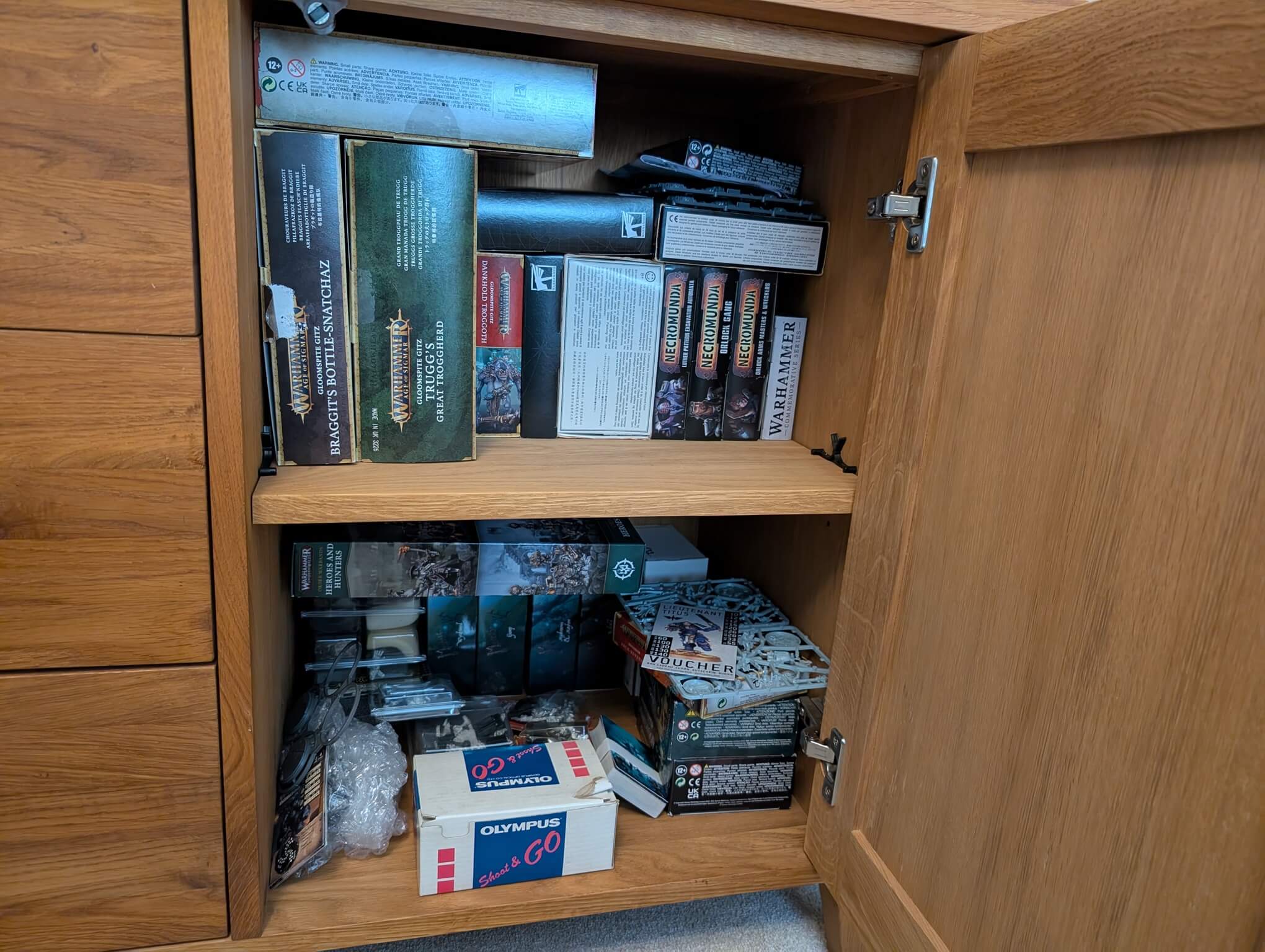Here at Badgeroid my mission is to apply Mindfulness to the Warhammer painting hobby. Using Warhammer as a tool to support mental health and provide stress relief, as well as finding a way to hobby mindfully.
Warhammer is a creative and immersive hobby. You play games, paint miniatures, and read books. There are also animations now! The creative freedom that it allows is one of the most compelling aspects for me.
However, despite this, I had a crisis of confidence on my Warhammer journey as of late.
After some soul searching, I realised that I’ve been comparing myself to others. To the point where sometimes it affects my mood, my motivation to paint and ultimately my mental health.
This has highlighted the importance of balancing supporting and learning from the wider community with managing my expectations and celebrating my achievements.
The Pitfalls of Comparison in Warhammer

So, obviously I love the eye candy of the awesome miniatures painted by some incredibly talented people. It inspires me to try new techniques or paint in different ways. But other times I get the opposite feeling. It’s a feeling of not being good enough. Maybe even envious of other painters.
The reasons are many:
- They are better painters than me.
- They paint faster than me.
- They are more consistent at the hobby than me.
- Better conversions and kitbashes.
- They build cool terrain.
- They seem to have more time to dedicate to the hobby than me.
And all this is especially true when I open Instagram. The innate human nature of wanting to compare ourselves against others created the perfect storm when combined with social media.
The Negative Effects of Constant Comparison
It is near impossible not to compare myself to what I can see online. Even though I know I shouldn’t. It sometimes gets under my skin so much that it saps away my enjoyment of Warhammer and the hobby, and can build anxiety and stress.
This is often due to unrealistic expectations that social media can create. For instance, watching a video about “HoW tO pAiNt An ArMy in 24h!1!!” makes me want to do the same thing even though I know I won’t be able to. It’s real life down here, and real life is not a YouTube video.
To give you a concrete example: I was almost quit the hobby and didn’t paint a single miniature for 3 months because a post on Instagram didn’t get many likes. I was jealous of others that had big followings and felt like if I had no likes, there’s no point!
Mindfulness as a Solution

Mindfulness is where you focus on staying in the present, whilst accepting and acknowledging your feelings, thoughts and emotions.
I have been practicing mindfulness for over 2 years now to manage these (and other!) feelings; enabling myself to enjoy the hobby again, not for Likes, but for my liking and benefit.
On this journey, I found the following techniques most useful to combat the pressures of social media and comparison:
- Enjoy the process. Not the outcome.
- Celebrate your progress and the small wins.
- Practice mindfulness while painting.
- Limit Social Media!
Enjoy the process
Try to focus on the present moment. Savour the enjoyment you get from simply painting Warhammer, rather than focusing on the outcome. This brings back the intrinsic satisfaction of the act of painting Warhammer miniatures. And in turn, when the enjoyment returns to the process, not the outcome, it helps to remove the need for external validation.
Celebrate Your Progress
By focusing on the present, you can celebrate your progress rather than comparing with others. I celebrate when I finish one unit for my army, or a grunt – or even when a new technique (kind of) works! I love the feeling of completing a step and a miniature, and these small wins give me motivation to carry on.
Pro tip: If you have space, find somewhere to display your minis. It’s been a great way to celebrate my work. Each new finished miniature goes in the cabinet to be admired.
Practice Mindfulness
Sometimes I also paint miniatures in complete silence. No music, no podcasts, no nothing. It really helps to immerse myself into the process. I can focus on every single brush stroke. Listen to the clinking sound of my brush against the water pot. Smell the water of my wet palette.
I also try to practice breathwork, taking deep breaths before a painting session. It slows down my heart beat and improves my sense of relaxation before starting. This helps slow down my brain and immerses me into painting quicker.
Limit Social Media
I also limit social media. This is a big one for me. I have spent hours checking others’ posts and videos wishing I was painting instead. And then I would just keep scrolling. The doom-scroll spiral is real. Keep your social media usage in check and take breaks when necessary. I’ve been out of Instagram for at least 6 months now and it’s been liberating. You may not want to go cold turkey – but even leaving the phone outside the room can help avoid both negative and positive distractions.
Bonus: Boost your motivation
And if I need a boost to hobby motivation, I set myself a very small goal. Set the smallest goal possible for yourself and celebrate the small wins! Paint just one thing. Clean your desk. And if you want to see how I hack my hobby motivation check out my Paint the Boot method.
Mindfulness to combat Warhammer comparison – Conclusion

The Miniature painting hobby, be it Warhammer or otherwise, is a personal journey that does not require comparison. Everyone is doing their own thing. It is important to keep that in mind when, inevitably, you find yourself comparing your skill to others. The hobby is not a race, and it is at its best without the pressure of comparison.
My mission at Badgeroid is to merge the joy of Warhammer with Mindfulness to relieve stress and improve mental health. In my experience mindfulness has been a game changer. I’ve learned how to deal with the stress of comparing myself to others and get back to enjoying painting.
I’m still learning as mindfulness is a journey that lasts a lifetime. But it is certainly better than few years ago. So if there is something you take away from this article, it should be this:
- Enjoy the process.
- Celebrate the small wins.
Trying to apply these two principles, and you’ll have a great time. Thanks for reading.















